8 Reasons to Buy Layered Reflective Insulation
2. Reduces the Chances of Mold or Mildew
3. It is a strong Vapor Barrier
5. No Rodents, Bugs, and Birds Nesting
6. Dramatically Reduces the Sounds of Rain and Hail
8. Stops Heat Transfer because it is a strongest Radiant Barrier
The Only Insulation that is an ALL-IN-ONE solution for HEAT, COLD, and CONDENSATION!
1. Stops Condensation
When warm air contacts a cold surface, condensation occurs. There are many benefits to insulation, but stopping condensation is #1, because condensation can damage what is inside a structure as well as the structure itself! Condensation is the same phenomenon that occurs when you take a soda bottle out of your refrigerator on a warm day. Simply stated, if you don’t insulation your building, the temperature difference between the outside of your building and the inside, will cause condensation to occur on the steel sheeting. Condensation means moisture (water vapor in the air) on the metal skin.
“It is imperative that a steel building stay weathertight. Once moisture has entered a building, a host of immediate and long terms problems can occur, such as mold, mildew, fungus growth, white rust, and oxidation. Most of these results can also cause adverse health effects” says John Barber, president of Discounted Insulation.
The leading insulation types for Metal buildings are Reflective and Fiberglass. The primary purpose of insulation is to keep the building cool in the summer months or warm in the winter months. Since condensation eventually will dampen fiberglass insulation – therefore reducing the R-value- we recommend our High R-Value Reflective Insulation over our fiberglass.
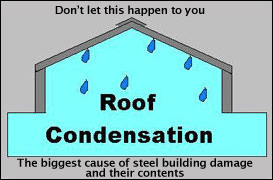
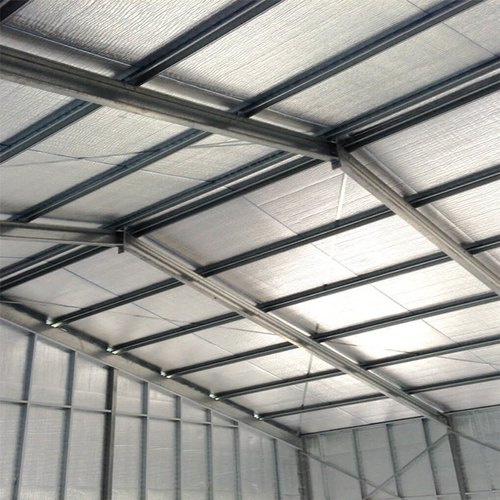
2. Reduces the Chances of Mold and Mildew
Nothing is more alarming than seeing the discoloration from mold and mildew on a wall. These are the primary types of fungi that occur if you have inferior insulation:
- Aspergillus niger
- Aspergillus avus
- Aspergillus versicolor
- Penicillium funiculosum
- Chaetomium globosum
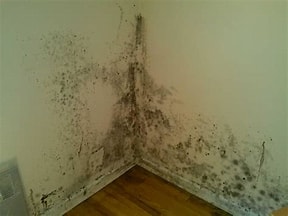
3. Strong Vapor Barrier
Our closed-cell polyethylene foam and reflective reinforced foil facing is a strong vapor barrier. It is also sealed around nails and screws, so there is no leakage.
4. Simple Installation Step
- Tape our double-sided tape on the top of the purlins. This will stop the insulation from blowing in the wind while you continue the installation process.
- Roll insulation perpendicular to and over the purlins. Let the insulation sag approximately 1 to 3 inches. Then seal the seam according to the insulation type chosen.
- Attach your sheeting. (On the pricing page there are more insulation installation options.)
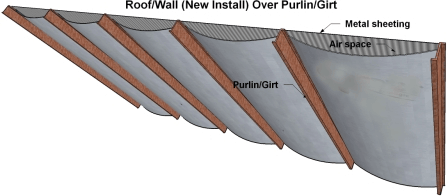
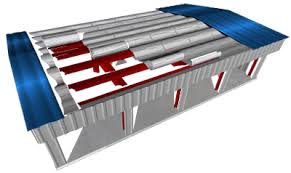
5. No Rodents, Bugs, and Birds nesting
One of the drawbacks of fiberglass insulation is that rodents, bugs, and birds can nest in it. However, this is not the case with reflective insulation.
6. Dramatically Reduces Sounds of Rain and Hail
Rain and especially hail can sound like you are at a rock concert if you don’t have insulation in your building! One key benefit of our reflective insulation is it deafens the sound of rain and hail.
7. Stong Air Barrier
Moisture that is carried in the air can impact the temperature and integrity of a building; therefore, the airflow within a building can also determine the spread of toxic smoke and gasses. An additional safety feature of our reflective insulation is the fact that is an air barrier, which means it also acts as a gas barrier.
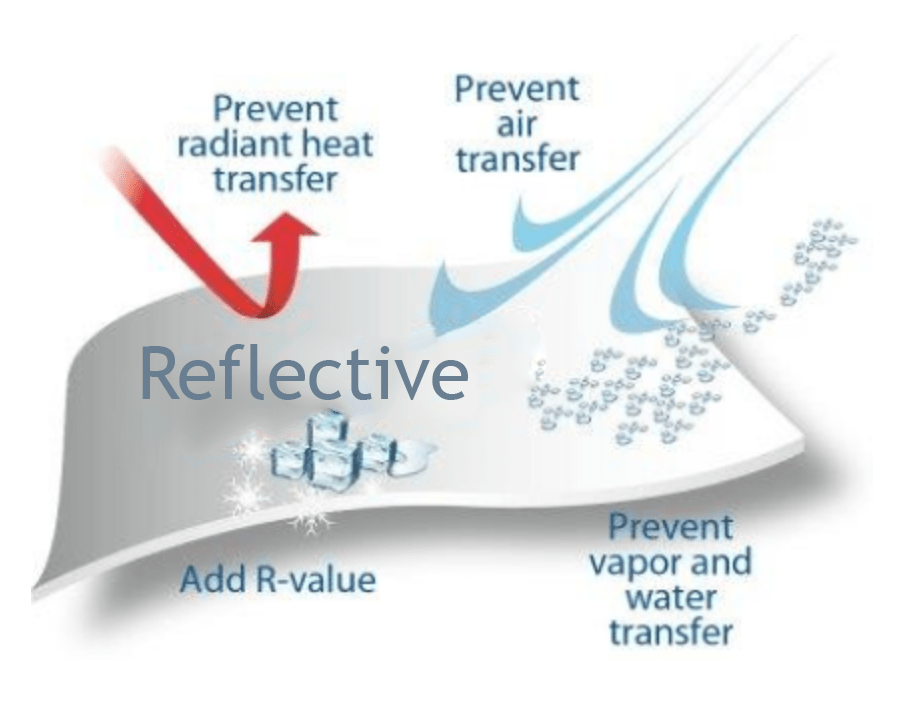
8. Stops Heat Transfer
Our insulation is 97% effective as a radiant barrier! Because of the unique nature of a steel building, it requires a STRONG vapor barrier and a radiant barrier. Certified by ECC-ES standards regarding efficiency and R-values.
- It is common knowledge that the summer heat (sun’s rays) on metal sheeting will dramatically increase the heat temperatures inside the building.
- Also, the cold conditions are exaggerated by the metal sheeted roof and walls making it frigid inside. Remember, warm temperatures coming in contact with cool sheeting will create (condensation).
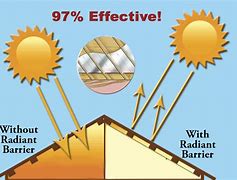
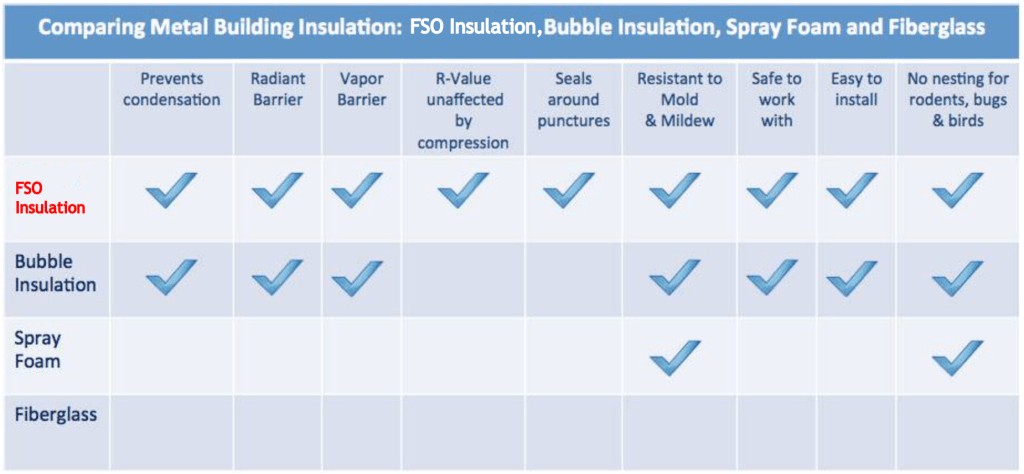
Fiberglass Insulation will lose some R-value
It pains me to say, but fiberglass insulation loses some of its R-Value if it gets wet. The trapped water also causes mold, rust, and oxidation. Fiberglass insulation isn’t considered a true radiant barrier, at least not in comparison to reflective insulation. Reflective insulation is not affected by humidity. Remember there will always be some humidity and insulation must work in these conditions. The picture on the right could eventually be the outcome of Fiberglas Insulation if wet or enough humidity comes in contact with it. It is also quite common to notice some sagging and flaking in time.
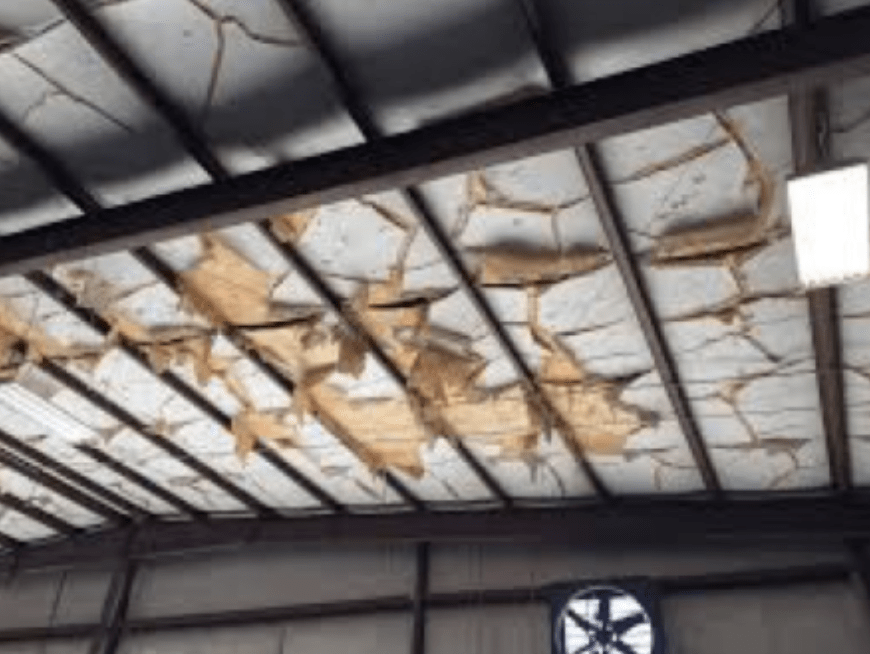
Why you shouldn’t use spray foam insulation
- Too expensive for most people
- Not a true radiant heat barrier.
- Difficult to install for the average person; therefore, a professional installer is required.
- Spray foam can release toxic fumes when it burns.
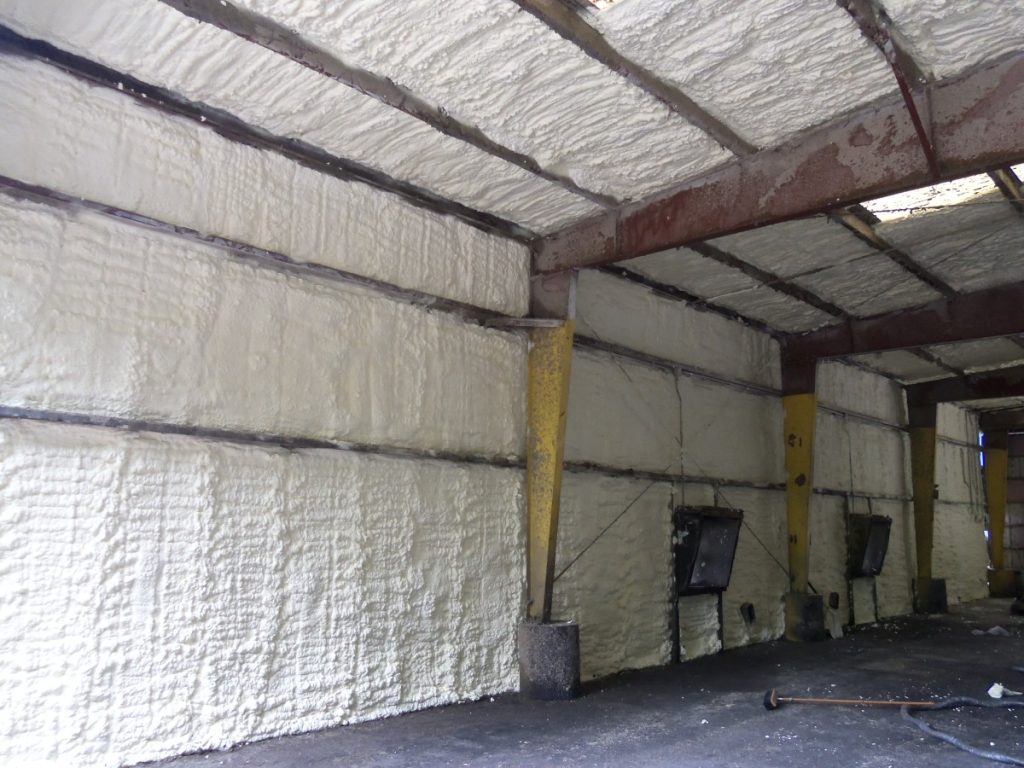
The Difference Between Reflective Insulation Types
There are four main reflective insulation products: Foil, Single Bubble, Double Bubble, and Insulation Discounted.
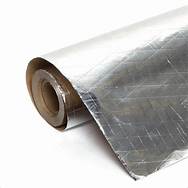
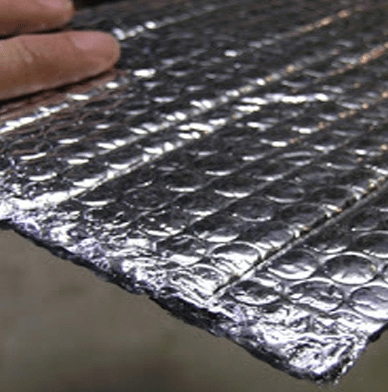
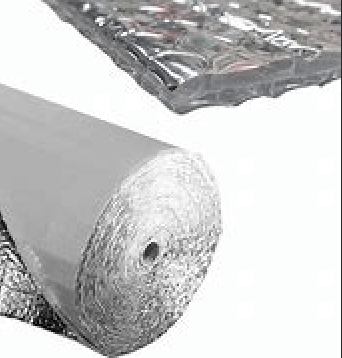

Radiant Layered Insulation
Reflective Bubble Insulation
Objectively I must say, the different Bubble insulations will offer some R-Value benefits, because they have some radiant and vapor barrier. However, that’s where the commonality with our insulation ends. Insulation Discounted Reflective Insulation material of polyethylene foam centers allows it to keep its shape when expose to external forces. This is KEY! You see, if insulation collapses under pressure, it loses its ability to be an effective radiant and vapor barrier. At the 6-psi pressure level, Insulation Discounted’s insulation only collapses 6%. More importantly, when this pressure is relieved, it will fully form back to its initial shape! Needless to say, traditional Single or Dubble Bubble insulation are unable to do this.
Single or Dubble Bubble Insulation
Our competitor’s reflective single and double-bubble insulation comprises air bubbles sandwiched between reflective materials. Dubble bubbles are defined as having a second layer of bubbles; however, candidly there is not much difference in performance between single and double bubbles when it comes to performance. You see, once a bubble is punctured -whether single or double – it loses shape; therefore, loses radiant and vapor protection. Like all billons that can easily pop, bubble insulation can easily pop! The key reason Insulation Discounted reflective insulation maintains it’s high revalue and is a better product than bubble insulation is that the heat of the metal skin won’t cause our polyethylene micro-bubbles to collapse.
Foil Insulation
It is common sense that just a piece of foil – without layers – will not offer much protection. However, there are those who proceed to buy this product.
Insulation Discount’s Reflective Insulation Works because it is LAYERED.
R-Values 17 & 22

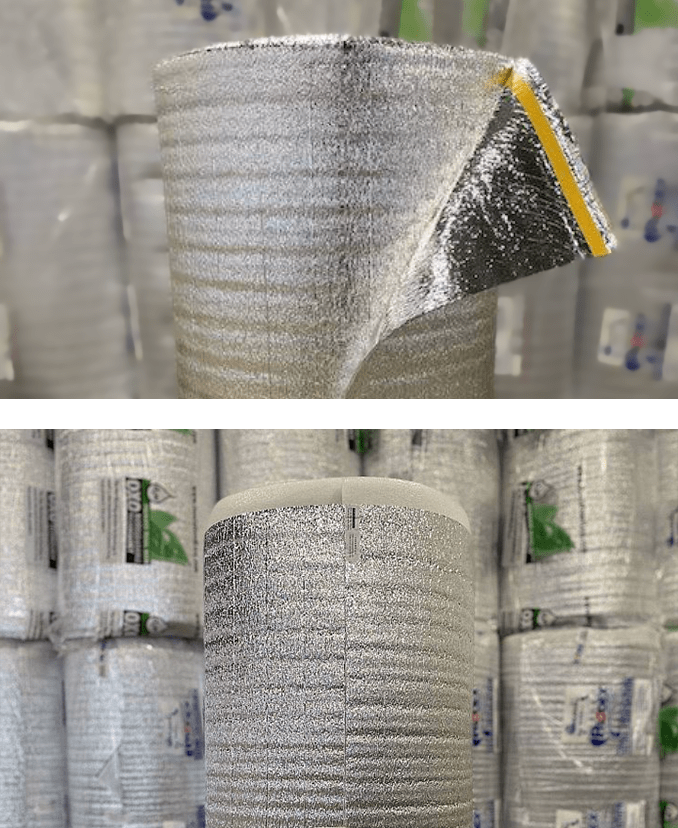
R-Value 15 (Black-Facing)


R-Value 15 (White-Facing)
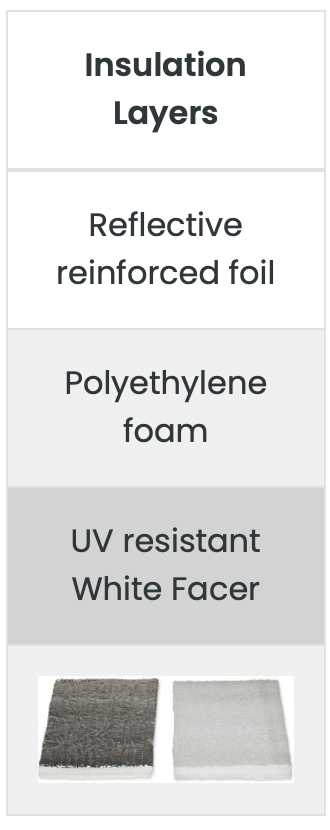
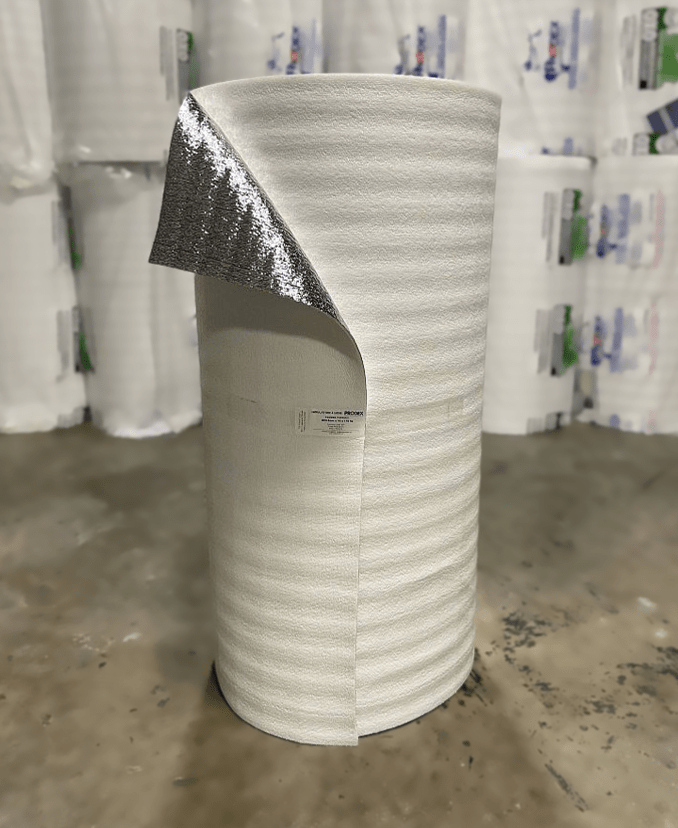
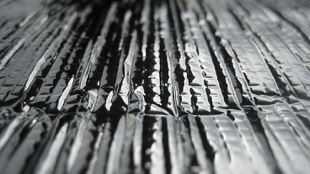
The creases you see in the foil allow for additional airflow. That is why we have the highest reflective R-Values!
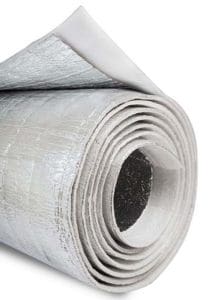
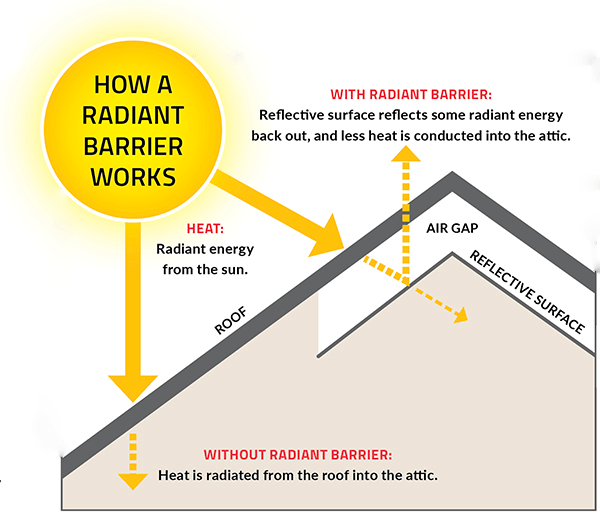
Layered Reflective Insulation is best Insulation for Steel Buildings and Pole Barns
Over a million orders and over 5 million sq. ft. of this Insulation have been sold.
For decades, the most popular insulation, whether residential, commercial, industrial, or agricultural facilities, was fiberglass insulation.
Well, this is no longer the automatic belief. More and more people are becoming aware that the best way to slow down conductive or convective heat transfer, is to have some reflective material within the insulation. More than one independent government study has shown it is REFLECTIVE insulation that is best material for slowing down radiant heat and condensation. Since radiant heat can account for as much as 93% of heat transfer, getting the correct insulation is an imperative. Though foam and fiberglass are still commonly used, more individuals are selecting reflective insulation to address their insulation requirements. Noted, Insulation Disconted’s reflective insulation is not affected by humidity. Again, this is key! Rember, outside humidity causes humidity inside your building. There is no value to insulation unless is it works efficiently in these conditions.
Obviously, every type of insulation has its building niche. However, Insulation Discounted insulation offer the public the two leading insulations for pole barns and steel buildings: Fiberglass batt and Reflective insulation.
Conclusion:
If you primarily want to reduce radiant heat transfer, condensation, and save money, our high R-Value reflective insulation is the smartest buy! Why? Because our insulation is a complete vapor and radiant barrier! It reflects 97% of the radiant energy flow that strikes it. Therefore, it reflects (keeps) the heat inside the steel structure on cold days and reflects the sun’s heat rays outward during the hot summer months. Obviously, this means savings on heating and air conditioning bills.
Factory Steel Overstock’s Reflective Insulation is the preferred choice for Steel Buildings and Pole Barns
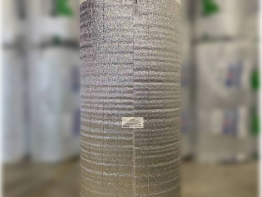
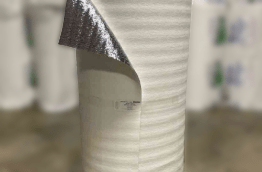
- Available High R-Value – 15.3 (white facing), 17 and 22 (reinforced reflective facing)
- It is ICC-ES Recognized
- R-Value unaffected by outside humidity
- It prevents 97% of radiant transfer (the primary source of heat flow)
- Is a vapor barrier
- Prevents condensation
- 19 dba contact noise reduction
- 90 Celsius (194 F) contact temperature rating
- UV resistance
- Center is polyethylene foam instead of air bubbles.
- Material does not allow mold or mildew
- Does not provide for nesting or rodents, bugs or birds
- Easy seals around nails (no leaks)
- 100% recyclable virgin raw materials; therefore eco -friendly.
- Its surface keeps it airflow
- Lighter weight; therefore, less cumbersome installation than fiberglass batt
- Significant price savings over fiberglass batt and spay of same R-Value standard
- Delivery times (fiberglass average delivery is 2 to 3 weeks vs. reflective is 7 to 10 days).
Reflective R-Value 17
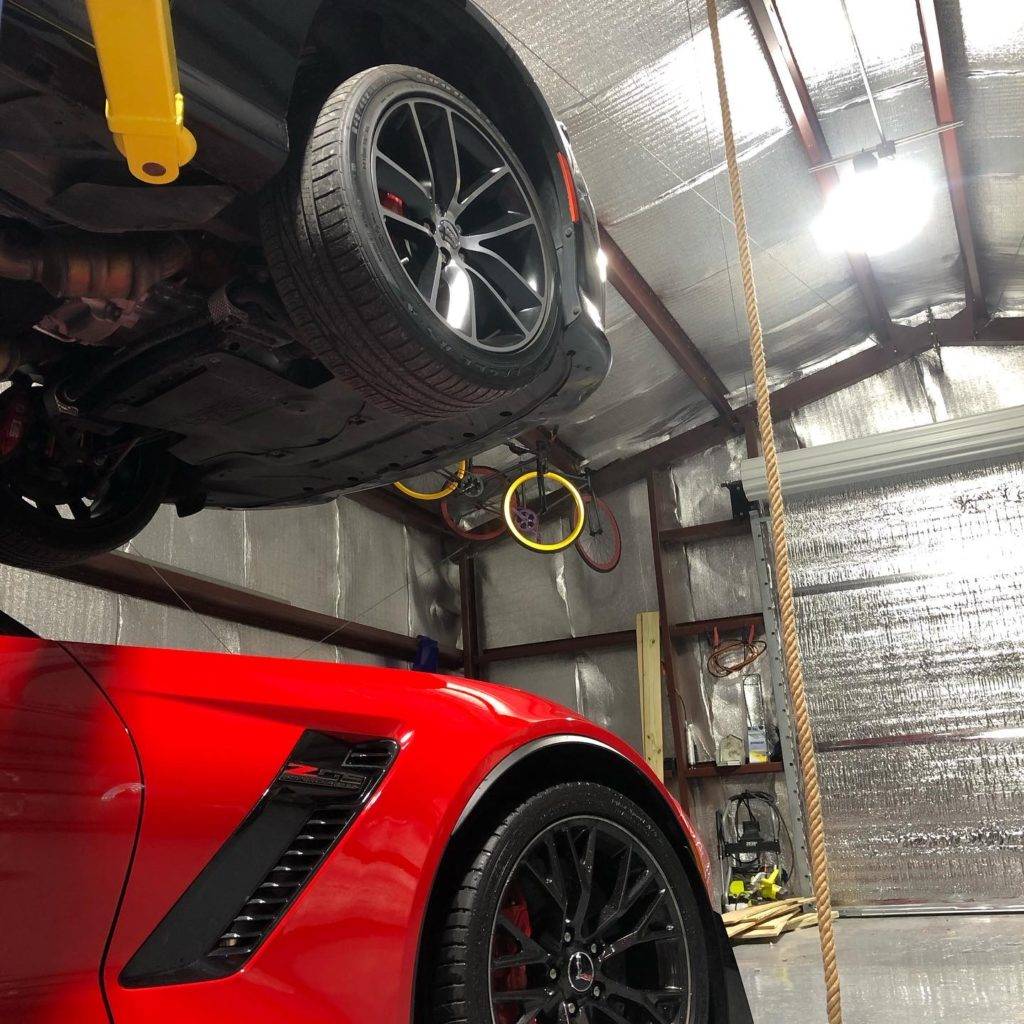
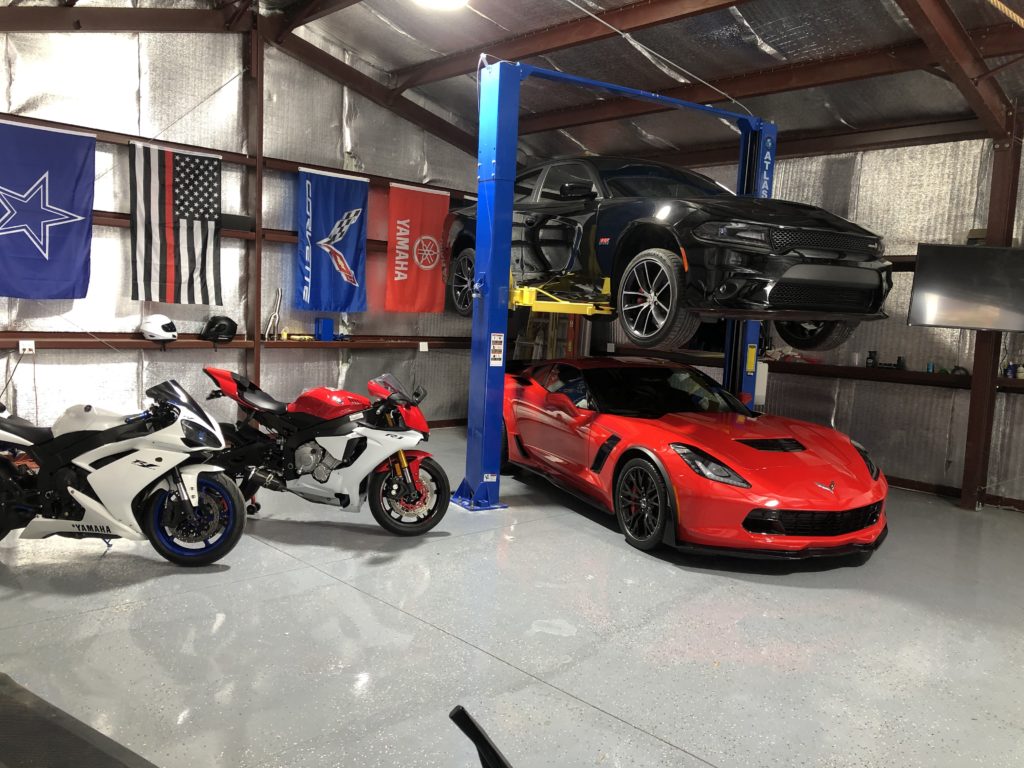
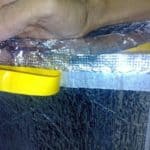
- 4′ x 175′ (700′ per roll) and NEW 5′ 2 x 125′ (645′ per roll)
- There is an adhesive along one side of the 175′ roll, not the 125′ roll.
- 5 mm thickness
- Improve tear resistance
- Flame Spread – ZERO
Insulation Layered
- Reflective reinforced foil
- Polyethlene foam
- Reflective reinforced foil
All of our reflective insulations are lightweight and easy to install. The R- Value17 (4′ x 175′) has an adhesive running down one side of the roll; therefore, no need to buy seam tape to seal the rolls. This added benefit saves 50% of the installation time as well as makes the insulation a lot easier!
Testimonial
I have been a part of two orders and am now working on my third order. John Barber was helpful throughout the entire process…”
– David Muniz 30′ x 50′ x 16′ w/ R-22 Insulation
3/3/22
Reflective R-Value 15.3 WHITE Vinyl- BACKED
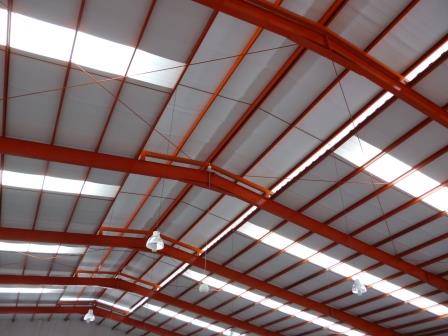
- 4′ x 175′ (700′ per roll).
- 5 mm thickness
- Improve tear resistance
- Flame Spread – ZERO
- White “attractive” facing
- Layered: Reflective reinforced foil + Polyethlene foam + UV resistant “white” facing
Insulation Layered
- Reflective reinforced foil
- Polyethlene foam
- UV resistant “white” faceing
Comparable in price to R-17 yet with the FRESH OPEN LOOK of the white vinyl backing many customers prefer in the interior of their metal building. R-Value is slightly reduced from 17 to 15.3 in this product due to the replacement of one side of polyethylene backing and reflective reinforced foil with the ALTERNATIVE UV-resistant White Facer.
Formal quotes will include double-sided tape for ease of installation.
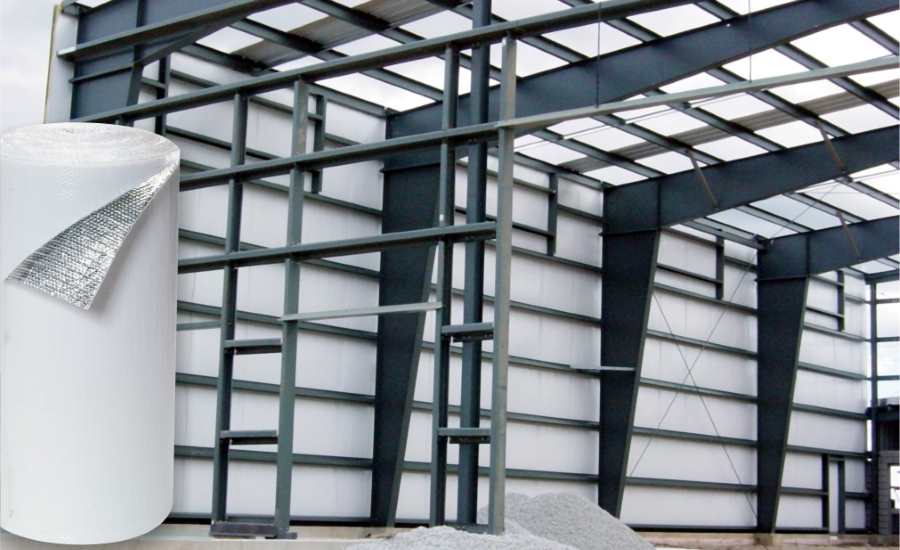
Reflective High R-Value 22

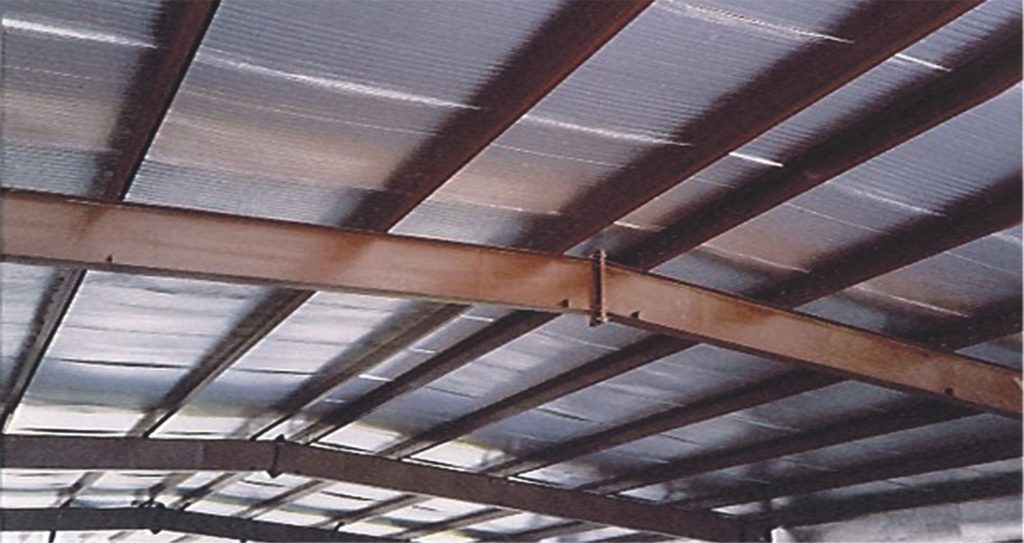
High R- Value 22 REFLECTIVE
- 4′ X 85.3′ (341′ per roll)
- 10 mm thickness
- Increased R- Value
- Added longitudinal strength
- Improved tear resistance
- Flame Spread – ZERO
- Use a hot gun to melt the polyethlene foam at the edges overlapping rolls. Add mild pressure. This will create “very” tight connection!
Insulation Layered
- Reflective reinforce foil
- Polyethylene backing
- Close -cell polyethylene foam center
- Reflective reinforce foil
R-Value 22 (10 mm) insulation is double the thickness as thick as our R-17′. It has closed-cell polyethylene foam covered on both sides with .00012 inch (0.03mm) aluminum foil facing. In addition to its high R-value, it is light, therefore very easy to install.
Our very popular R-22 has cuts at the edge to overlap the rolls. Simply use a hot air gun to cause the insulation to weld together. When you add pressure, you will create an impermeable overlapped seal between the rolls.

